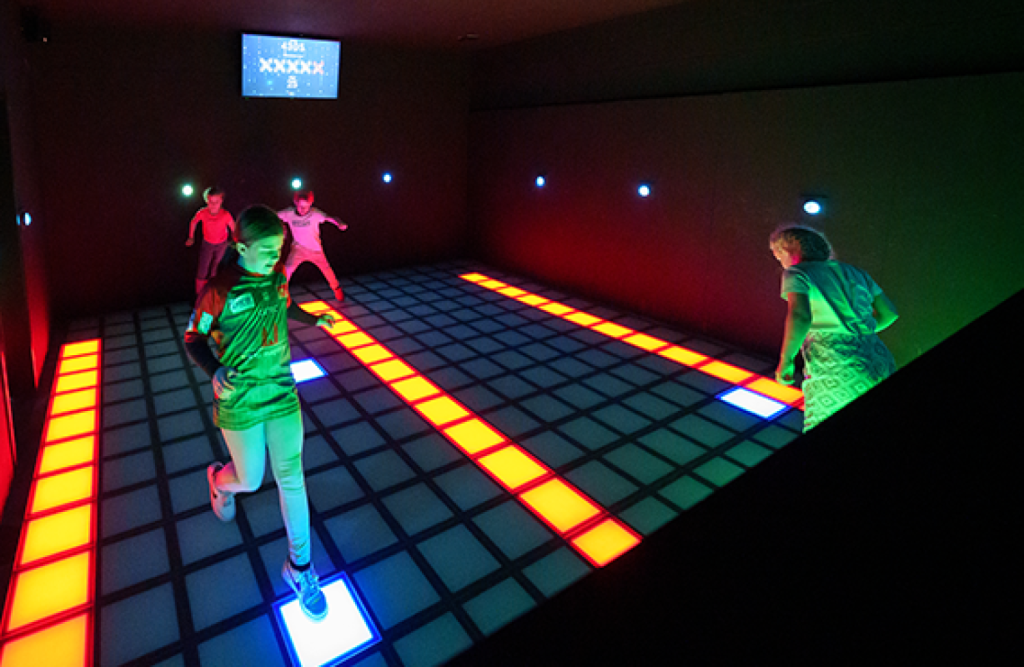Mixed activate games reality technology is fundamentally transforming entertainment standards by seamlessly blending digital content with physical environments to create unprecedented immersive interactive experiences. Activate Games’ mixed reality entertainment system utilizes cutting-edge spatial computing technology and environmental perception algorithms to break down the barriers between virtual and real worlds, delivering a true revolution in immersive entertainment.

Spatial Mapping and Environmental Awareness
Our activate games system employs high-precision LiDAR and depth sensors to construct and continuously update three-dimensional digital twin models of physical environments. This millimeter-level spatial mapping capability enables virtual elements to interact precisely with real-world settings – virtual characters can hide behind physical furniture, while digital effects can spread along actual walls, creating truly immersive mixed reality experiences. Environmental understanding algorithms further identify different material surfaces, adjusting the interactive effects of virtual elements to ensure visual consistency and physical plausibility.
Dynamic Lighting and Physics Simulation
Advanced light field rendering technology ensures virtual elements perfectly match the lighting conditions of real environments. The system analyzes ambient light direction, intensity, and color temperature in real-time, enabling virtual objects to cast shadows that seamlessly integrate with real shadows. The physics engine simulates real-world material properties, ensuring collisions, friction, and rebounds between virtual objects and physical environments follow natural laws, significantly enhancing the realism and credibility of experiences.
Multi-User Collaboration and Social Interaction
The activate games system supports real-time shared mixed reality spaces where multiple users can interact with the same virtual content from personalized perspectives. Spatial anchoring technology ensures all users see virtual elements in consistent locations, while personalized rendering optimizes visual effects based on individual viewpoints. Social interaction tools allow natural communication through gestures, voice commands, and virtual interfaces, enabling users to solve challenges collaboratively or complete projects together.

Adaptive Content Generation
An AI-driven content engine dynamically generates customized experiences based on physical environment characteristics. The system analyzes spatial dimensions, layout features, and available props to automatically adjust game difficulty and interaction methods. In smaller spaces, the system may create more concentrated puzzle experiences, while in larger areas it designs content requiring more movement and exploration, ensuring optimized mixed reality experiences for any venue.
Accessibility Design and Inclusive Experiences
The system incorporates multiple assistive function modes to ensure users of all abilities can enjoy mixed reality experiences. Features like voice navigation, high-contrast visual modes, and motion assistance options enable full participation for users with visual, auditory, or mobility limitations. The system can also detect user comfort levels, automatically adjusting experience intensity to prevent motion sickness or other discomfort.
Data Analysis and Continuous Optimization
Embedded analytics tools continuously track user interaction patterns and environmental data, providing deep insights for content optimization. Heat maps display frequently interacted areas, engagement metrics reveal the most captivating content elements, and the system utilizes this data to continuously improve experience design. Machine learning algorithms can predict maintenance needs, providing early warnings before issues affect user experiences.
Business Value and Application Scenarios
The mixed reality system offers unique competitive advantages for various entertainment venues. Family entertainment centers can create fantastical worlds beyond physical limitations, museums can bring exhibits to life to interact with visitors, and shopping malls can develop captivating brand experience spaces. The system’s flexible architecture supports rapid content updates, ensuring venues can consistently provide fresh experiences to maintain customer return rates.
Implementation and Integration
The modular design allows customized installation solutions based on venue characteristics. Standard packages can be deployed within days, minimizing business disruption. The system seamlessly integrates with existing ticketing, payment, and membership systems, providing a unified management experience. Remote monitoring and maintenance features ensure continuous stable operation, while software updates can be deployed via cloud without requiring on-site technical intervention.
Proven Results:
- 40% increase in customer dwell time
- 35% improvement in repeat visitation rates
- 30% growth in secondary spending
- 25% reduction in operational maintenance costs
Comments are closed.